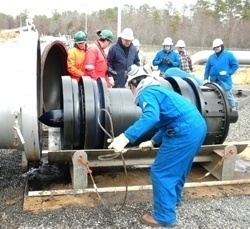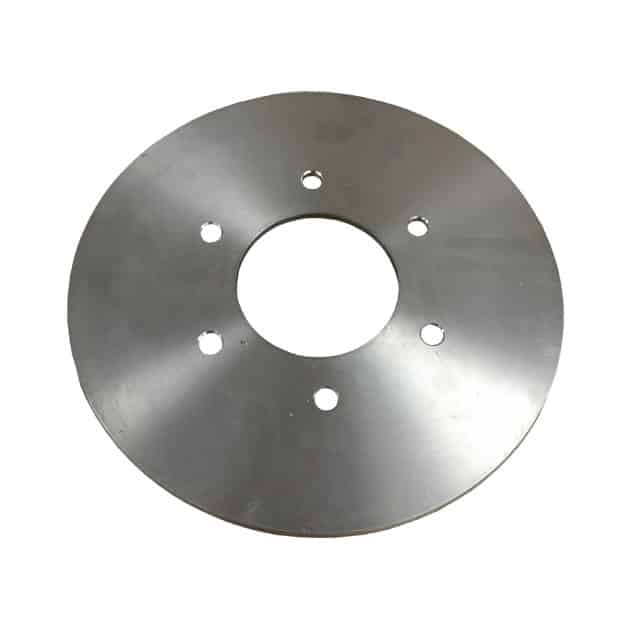If you’re reading this, chances are that you are already pretty familiar with what a steel mandrel pig is. But, did you know that there are more reasons to love mandrel pigs than just their bi-directional ability and resilience in a variety of pipeline environments? Mandrel pigs are incredibly versatile. They can be a cleaning pig, sealing pig or a combination of both. How is this possible? It’s all about how the pig is dressed.
Different Dresses for Different Jobs:
- Cleaning: When dressed for cleaning, mandrels pigs can include a variety of wire brushes, polyurethane blades and magnets. These pigs are designed for heavy scraping of accumulated solids or debris, and long runs. The “nose” of the pig can be fitted with a “jet nose” that includes bypass holes to assist in controlling the speed of the pig, as well as keeping chemicals or debris suspended in front of the pig.
- Sealing: When dressed for sealing, mandrel pigs include various types of cups, discs, and seals. These pigs are designed to remove accumulated liquids, separating dissimilar fluids, filling, dewatering, etc.
Advantages Vs. Disadvantages of Using Mandrel Pigs
In addition to their versatility and bi-directional ability, another advantage of using a mandrel pig, is that the body can be reused. Of course, how many times depends on the condition of the body after a run. In most cases, the existing configuration can be removed after a run, the body cleaned and the pig can be redressed.
Interestingly, the ability to reuse the shaft can be a double-edge sword. The cost to redress a mandrel pig after each run can be high. Larger, heavier pigs require special handling equipment and tools that can be expensive and time-consuming. In some cases the pig manufacture (Inline Services being one of them) will provide reconfiguration services to help offset these costs.
Mandrel Pig Design Innovations
Generally speaking, the mandrel pig shaft design has not changed much over the years. The accessories, on the other hand, have seen innovative changes that continue to improve the performance and cost effectiveness of mandrel pigs.
Poly resins and curative mixtures have improved the quality and performance of polyurethane parts such as cups, discs and seals. Inline Services has spent hundreds of hours and thousands of dollars alone in research and testing of resins and curatives to develop a superior performing polyurethane called MAXITHANE™.
Other innovations include the accessory configurations. Through thousands of hours working with customers on their projects, Inline has developed a steel mandrel bodied pig with a unique configuration of discs and cups that has proven optimal liquids removal depending on the type of line, length, number and radius of bends and frequency pigging is required.
Is A Mandrel Pig Right For Your Next Job?
Whether you’re project requires liquid displacement, general cleaning, product separation, black powder or paraffin removal, a mandrel pig is worth considering. Inline Services offers a variety of steel body mandrel pig styles including the Pit Cleaning® Pig, BA-2 Series, BD6 Series, BD6-RB, BD6-BR and the ISTE® Series. To find out if a mandrel pig is the right choice for your next pigging project, contact one of the pigging experts at Inline Services for assistance at 281.401.8142 | 888.973.0079 or email us at sales@inlineservicesnew.flywheelsites.com.




